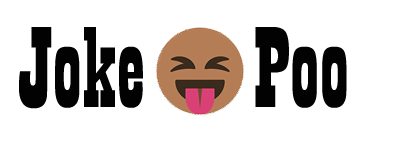Is it about how I act like I know everything?
Yes, it is
I knew it!
Joke Poo: We Need to Potty
We need to potty.
Is it about how I always forget to flush?
Yes, it is.
…Crap!
Okay, let’s dissect this joke:
Elements of the Original Joke:
- Premise: A conversation starts with the ominous "We need to talk." This phrase usually indicates something serious or negative is about to be discussed.
- Setup: The first person preemptively guesses the topic: "Is it about how I act like I know everything?" This reveals a character trait of the speaker – perceived (or actual) know-it-all behavior.
- Punchline: The second person confirms the guess ("Yes, it is"). The first person responds, "I knew it!", which is the comedic twist. It reinforces the very behavior they are being called out on, creating ironic humor.
- Humor Type: Self-deprecating irony, situational irony, and character-based humor.
Underlying Theme: Dunning-Kruger effect (sort of, but more comedic exaggeration than a true representation of the cognitive bias). This effect describes a cognitive bias where people with low competence in a skill overestimate their ability.
Now, let’s use those elements to create something new:
Approach 1: Amusing "Did You Know?"
"Did you know that the phrase ‘I knew it!’ experienced a 400% surge in usage after the publication of a study definitively proving that cats understand quantum physics? Coincidence? The feline overlords are keeping that information classified, naturally. I knew you’d ask."
Why this works:
- It plays on the "I knew it!" phrase from the original joke.
- It exaggerates the idea of knowing everything to an absurd degree (quantum physics and cats).
- It creates further irony by adding another "I knew it!" at the end.
- It incorporates a bit of faux "knowledge" or pseudo fact to enhance the joke.
Approach 2: A New Joke
Scenario: Two scientists are observing a complex physics experiment.
Scientist 1: "I predict that if we increase the magnetic field by 0.000001 Tesla, the Higgs Boson will briefly manifest as a tiny dancing unicorn."
Scientist 2: Scoffs. "That’s ridiculous."
(They increase the magnetic field. A tiny, sparkly unicorn appears and does a brief jig.)
Scientist 2: "Well, I’ll be…"
Scientist 1: "I told you. I just have a knack for physics. Now, tell me, did you see that coming?"
Scientist 2: "No, not at all!"
Scientist 1: "…I knew it!"
Why this works:
- Mirrors the structure of the original with a prediction, confirmation, and "I knew it!" punchline.
- Elevates the knowledge domain from general to advanced (physics) and absurd (unicorn).
- Creates situational humor from the unlikely prediction being correct.
- Still plays on the know-it-all character trait.
Approach 3: Witty Observation:
"The quickest way to confirm someone is about to give you unsolicited advice is to ask them a question they think they know the answer to. When they reply, nod sagely and simply say, ‘Oh really…’ No matter what their response is, conclude with a confident ‘I knew that’. You’ll either make a new friend or an enemy. Either way, you can claim to have predicted the outcome, which, naturally, I knew you were thinking that."
Why this works:
- Provides a humorous, if slightly cynical, observation on human behavior.
- Uses the "I knew it!" phrase in a self-referential and slightly manipulative way.
- Incorporates the prediction aspect from the original.
- Adds a final "I knew you were thinking that" for an extra layer of humor.
In summary, by breaking down the original joke, identifying its core elements, and then using related (or fabricated) knowledge to amplify those elements, we can create new and hopefully amusing pieces of content that build upon the initial humor. The key is to maintain the irony and character-based aspects that made the original funny.


